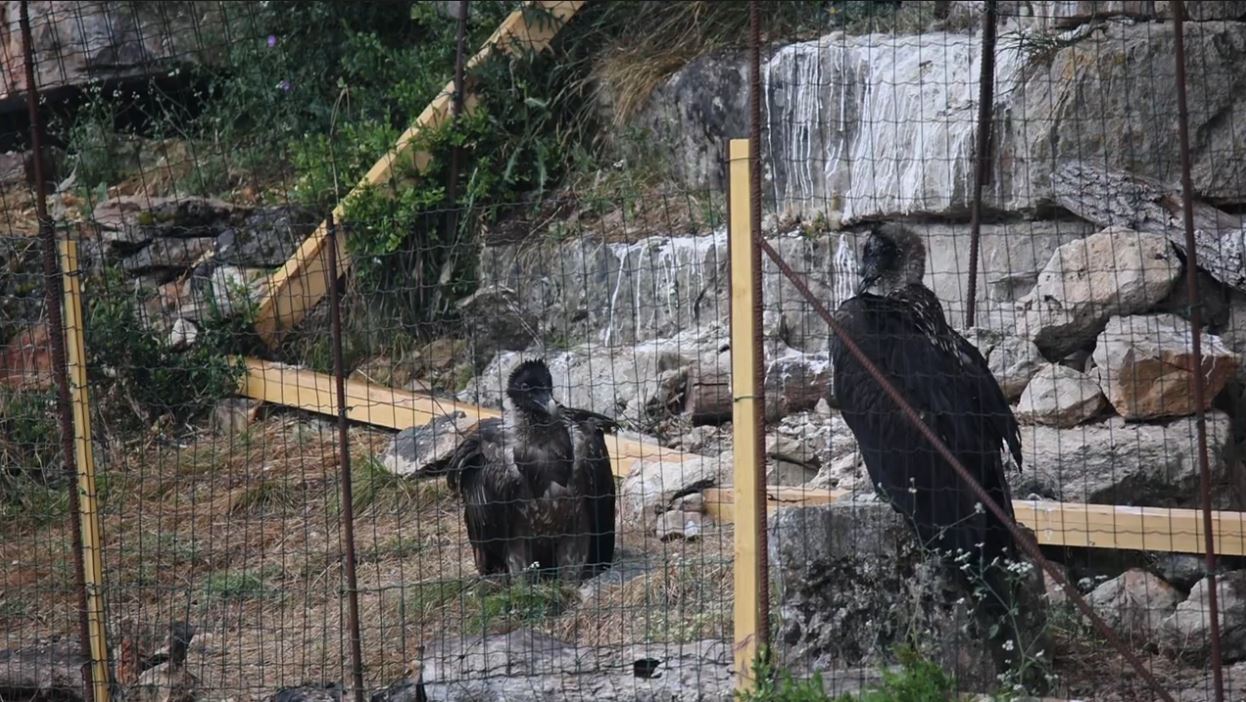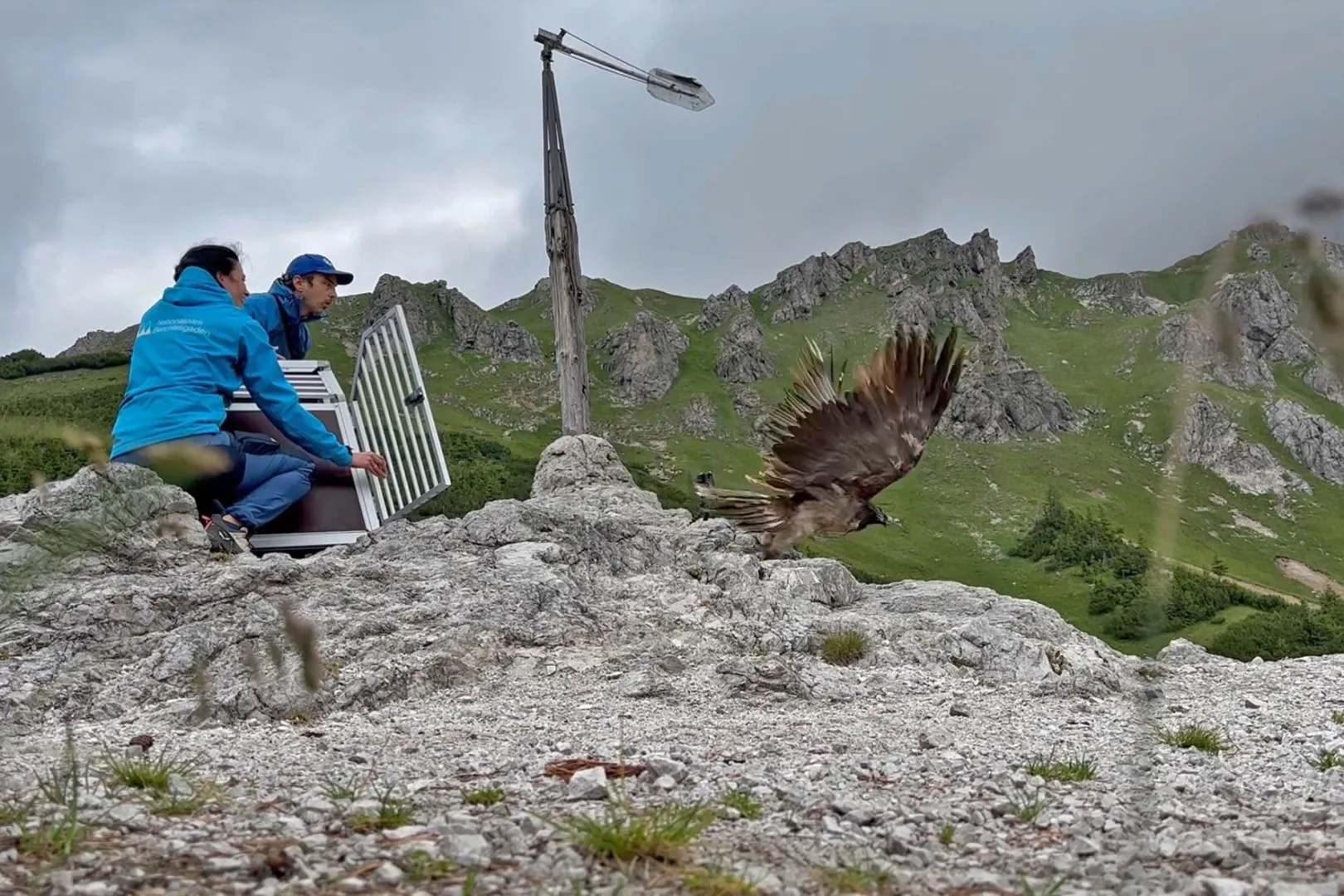The first bearded vulture to hatch this year within our captive breeding network (bearded vulture EEP) came out on the early hours of the 28th January, from the first egg laid in this new breeding season by one of the breeding pairs from the bearded vulture captive breeding center in Guadalentín, managed by the Junta de Andalusia and the Fundación Gypaetus. It was named “Chaplin”, and hatched completely alone. The second chick, baptized Gila, came a few days later (8th February), from the breeding pair Lázaro and Nava, the third chick from this difficult pair – the egg was not well placed in the nest and so the staff had to help, opening a hole in the egg, and then actually manipulating the hole to facilitate the hatch (see photos) – but all went well due to the expertise of the staff at Guadalentin.
The captive breeding center in Guadalentín is one of the three large specialized captive breeding centers for the bearded vultures, and its main aim is to produce as many chicks as possible and adopt chicks coming from other institutions, while the two other centers (in Vallcalent, Spain and Haringsee, Austria) becoming more specialized in breeding founder birds and/or birds with behavioral anomalies or physical disabilities.
All three centers are part of the bearded vulture captive network where +40 zoos, animal parks, private institutions and wildlife rehabilitation centers are working for the conservation of this endangered species. This network, organised in a European Endangered Species Programme (EEP) under the European Association of Zoos and Aquaria (EAZA), is coordinated by the VCF. Most of the chicks bred in captivity are released in one of the four on-going projects: Alps, Andalusia, Grands Causses –included in the framework LIFE GypConnect project- and Corsica.
As we speak, many dedicated people across Europe are now working day and night to take care of precious eggs, help vultures hatch, and feed them in the key first few days of their lives. The VCF would like to thank all these people for this great collaborative work. Without them, the bearded vulture would not be flying high above the alpine peaks, the gorges of the Grands Causses, and the craggy peaks of Cazorla. Thank you very much!
Photos: Fundación Gypaetus, Helena Torné, Sarah Díaz Sarah DíazSarah Díaz



